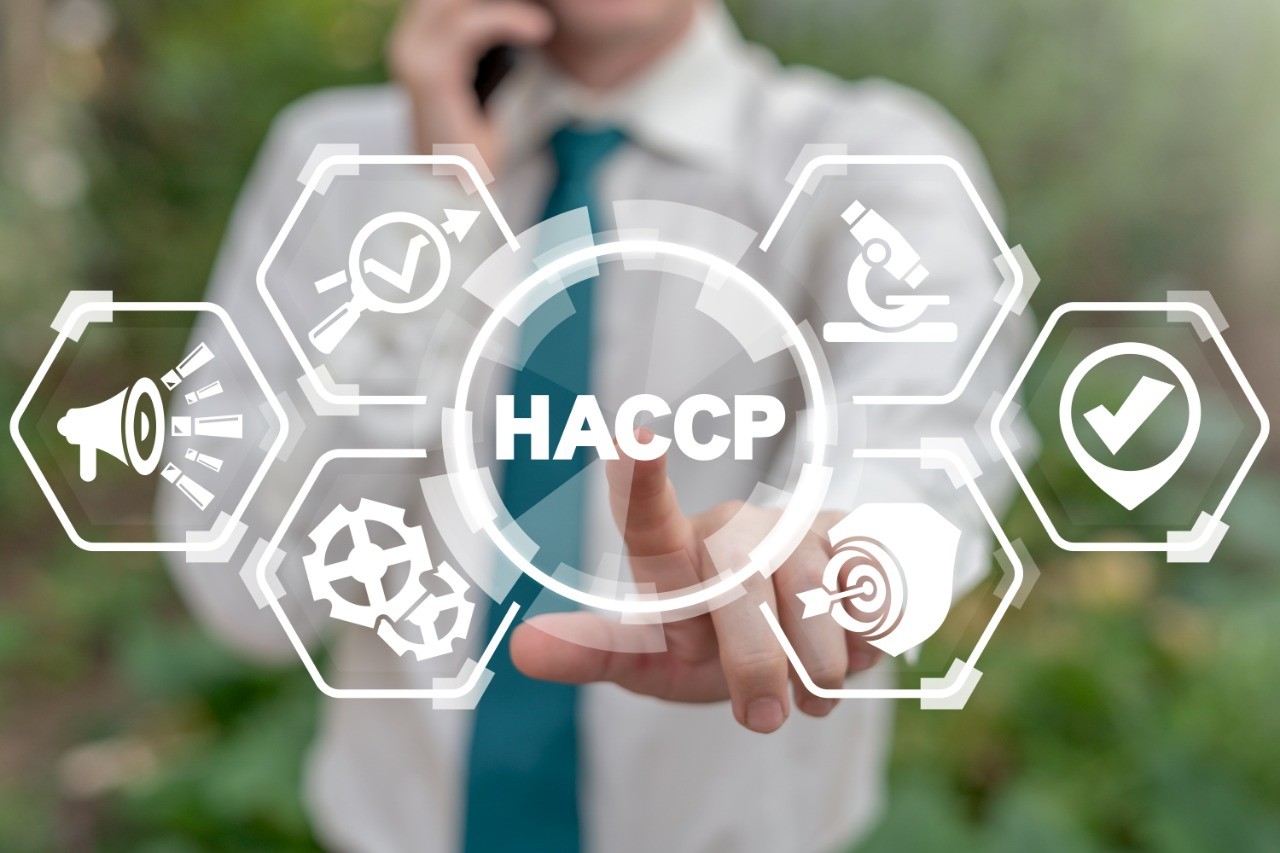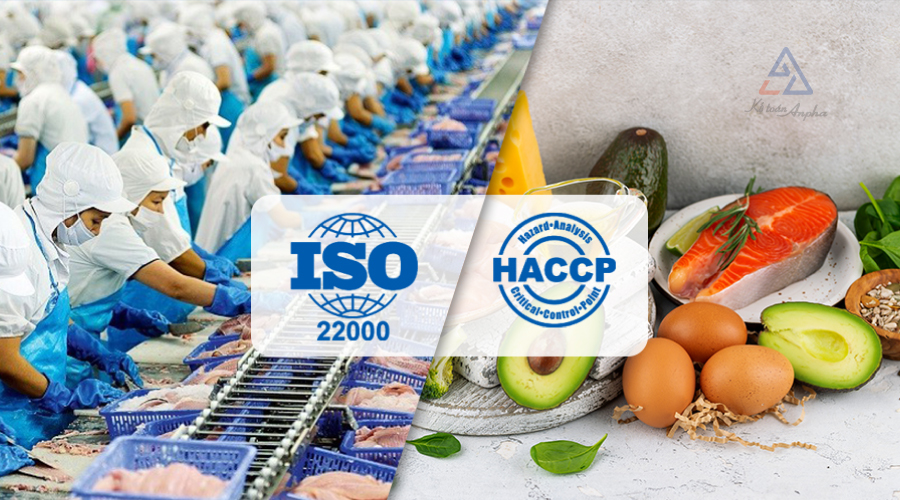what is HACCP?
Home / Idioms / what is HACCP?

What is HACCP?
You may have seen the phrase HACCP on food products, but you do not know the meaning of this phrase. If we want to say what HACCP is, we must define it as a legal and regular system that monitors the production of food products for their health. In fact, there are risks in this system that one of the food items may know. In simpler words, if we want to tell you, the task of HACCP is to produce important food products that may cause identification and a solution to make it safe.
What is HACCP?
In today’s world, when people buy food products, in addition to checking the production and expiration date, the license of the Ministry of Health, the product manufacturing plant, etc., they want to obtain health information to be sure that their product is safe in every way. It is healthy, therefore. The HACCP certificate is one of the certificates that make people feel at ease.
HACCP is one of the methods of monitoring the quality of the food industry, in which the quality of the food industry is examined from the production stage to the final purchase. By using this method, the health and hygiene of the human society can be ensured and all biological, chemical, and disease agents and diseases are identified and standardized to an acceptable level.
Obtaining the HACCP certificate is the first step that many managers take to prove the health of their food products to the public. Obtaining this certificate is not what I think! If the manager of a company succeeds in obtaining this certificate, it means that he follows all the health protocols and no biological or chemical disease affects the food consumer.
History of HACCP at the global level
You may ask what HACCP stands for? HACCP stands for Hazard Analysis Critical Control Point meaning hazard analysis and critical control in the food industry. HACCP was first introduced in 1971 at the National Food Conference.
In 1973, pills bury company with American air and space company started NASA’s activities in this field and according to the researches and experiments they obtained, they compiled a report called evaluation of microbiological role in food and finally, this result arrived. All branches of the food industry use this system to monitor and control the health of human society.
This system was approved by the Codex Alimentation Commission in 1993 and is used in many European and American countries. It is worth mentioning that HACCP will be used in all regions in the following years.
Getting to know the international HACCP standard
The HACCP standard describes the principles of risk analysis and crisis control in the food industry. It is also part of the software steps developed by the Codex Food Committee, a subgroup of the World Health Organization (WHO). In addition, ISO 22000 combines the HACCP system with preconditioning programs or (PRPs). In better words, the HACCP standard can be defined as a subset of the ISO 22000 food quality management standard.
Risk analysis of food production in HACCP
Risk analysis through the application of the HACCP standard is key to entering the food safety management system, risk analysis helps companies to acquire and regulate the knowledge needed to establish and implement effective risk control measures.
In the HACCP standard, every risk that is reasonably possible to occur in the food chain must be identified and evaluated, such as risks that can be related to the type of process and equipment used. Therefore, the food safety standard specifies criteria for identifying and documenting why a company needs to control certain hazards and other companies do not.
Haccp food industry standard
Food supply risks
Examples of food supply risks and the application of the HACCP standard:
Diseases or insects
Pollution, pesticides, terrorist chemical pollution (bioterrorism)
Bad application or unfavorable preparation
Unsanitary situations
Mislabeling or improper storage
Transportation (not an inherent risk, but the more food is sent over long distances, the more likely it is)
Development of HACCP standard program
Developing and following a HACCP standard program makes good business sense, and many governments now require that all companies in the food chain, from producers to sellers and even equipment manufacturers, have their own programs.
What are the types of food product risks?
There are four types of risks that you should consider in all types of food products:
Microbiological
Chemical
Physical
Allergens
Principles of HACCP
HACCP is a systematic approach to identify, evaluate and control food safety hazards based on the following seven principles:
1- Performing risk analysis
This principle includes listing process steps and identifying locations where significant hazards are likely to occur. The HACCP team will focus on the hazards that can be eliminated or controlled through the HACCP plan.
2- Determination of critical control points (CCP)
A critical control point (CCP) is a step or method at which control can be applied to reduce food safety hazards to acceptable levels. The HACCP team will use the CCP decision tree to help identify critical control points in the process.
3- Creating critical limits
A critical limit (CL) is the maximum or minimum value at which a biological, chemical, or physical parameter must be controlled in a CCP to prevent or reduce a food safety hazard to an acceptable level.
4- Supervisory procedures
The HACCP team describes the monitoring methods for measuring the critical limit at each critical control point. Monitoring procedures should describe how to measure, when, responsible and how often during production.
5- Corrective measures
Corrective actions are procedures that are followed in case of critical deviation. The HACCP team will identify the steps that will be taken to prevent potentially hazardous food from entering the food chain and the steps that will be needed to correct the process.
6- Verification methods
Verification methods are those activities that determine the validity of the HACCP plan. The HACCP team may identify activities such as CCP audits, record reviews, previous shipment reviews, instrument calibration, and product testing as part of the verification activities.
7- Registration procedures and documents
A key component of the HACCP plan is recording information that can be used to prove safe food production. These records should include information about the HACCP team, product descriptions, flow diagrams, hazard analysis, identified CCP, critical limits, monitoring system, corrective actions, record keeping procedures and verification procedures.

Elaboration of HACCP plan
The format of HACCP plans can be different. In many cases, designs will have a specific form to suit the product and process. However, some designs may use a single operation approach. General HACCP plans can serve as a useful guide in process and product development. However, it is imperative that the unique circumstances at each facility be considered during the development of all components of the HACCP plan
The HACCP system is a rule that monitors the safety of food production and all possible hazards.
HACCP identifies all points of food production that may cause illness and disease and provides a solution.
HACCP identifies all biological, chemical and disease and eliminates them to a standard level.
It is not possible to obtain the HACCP certificate, and if a company succeeds in obtaining this certificate, it means that it has followed all the health procedures.
What is the HACCP system?
The most important system of the HACCP system is the control of potential risks in the production and distribution of the food industry. HACCP takes all the major agents and factors such as microbial, chemical and physical substances and ensures the health of consumers by controlling and monitoring the production line. One of the intellectual concerns of consumers is the introduction of free killers and antibiotics into the food chain, which is addressed by using the HACP system. Other important things that prove the HACCP system are as follows.
It examines all the health aspects of food production up to its production stage.
Works with management control systems such as ISO900.
Ability to provide food for you.
The ability and prevention of chemicals, chemical, biological and…
It saves on the consumption of materials and laboratory equipment.
Saving time.
Cost savings.
This system is one of the dangers that prevent its occurrence.
It is very flexible and adaptable.
7 principles of only using HACCP in the food industry
Identification and analysis of risks in the food industry
Biological hazards
The presence of insects, bacteria and things that attack food and cause toxins can cause biological hazards, in fact, bacteria and viruses are far more than insects. Viruses are among the biological hazards that cause serious problems for food consumption.
scientific dangers
The presence of physical materials such as plastic, glass, sand, etc.
chemical hazards
Chemical detergents, pesticides, toxic metals, nitrous, etc. are some of the things that chemical chemicals have for consumers.
Determining and examining crisis points in the food industry
Controlling critical points is to understand and eliminate factors that affect the health of human society. ID These points are very important in HACCP, because it is one of the most important steps of this system that helps to control pathogens. At this stage, you must answer four important questions.
Can possible risks be avoided at this stage? If your answer is positive, you can go to the next step, and if your answer is negative, you must make a change in your product that does not endanger the health of the consumer.
Is it possible to eliminate or control the risk? If the answer is yes, this step is a CCP point and you don’t need to check the next question, but if your answer is no, answer the next question.
Is there an increased risk? If the answer is yes, go to the next step.
Is it possible to reduce the risk? If the answer is no, the point is CCP.
Determining the critical range in the food industry
Determining the critical range in food health control is one of the preventive measures that must be applied, and to determine and recognize this limit, you must seek guidance from reliable sources. Heat, humidity, pH, etc. are among the things that are considered in determining the critical range of the food industry.
Monitoring in the food industry
Checking, measuring and successive measurements in a controlled manner are among the things that are created in controlling critical points and preventing deviations and errors, the duty of monitoring is to record documents and documents in the HACCP system This step requires a high speed of operation, which is not possible due to the short time interval between food production and consumption, and we cannot use long tests.
Corrective measures in the food industry
If there is a point of deviation from the crisis in the monitoring phase, we must take measures to eliminate these deviations and control them.
Confirm
To ensure the correct and efficient operation of the HACCP system, we must use tests and methods that can be approved and cited for the system.
Documentation
HACCP methods must be reliable and measurable so that critical points can be clearly identified, therefore, all methods and reports must be recorded and maintained in the system.
HACCP controls major risks such as chemical, physical and physiological.
One of the problems of the food industry is the introduction of pesticides and antibiotics into the food chain, which can be solved with the HACCP system.
The principles of using HACCP include: identification and analysis of hazards, determination of critical points, determination of critical limits, monitoring, corrective actions, approval and reference.
How to use the HACCP system at home?
After buying food, consumers can use the HACCP method at home through proper cooking and storage instructions. For example, after preparing meat and chicken, you can wash it properly and then pack it in the freezer.
The importance of microbiological testing in the HACCP system
Microbiological tests play an important role in tracking pathogens. Using microbiological testing, you can control the production process and reduce pathogens and bacteria.
Conclusion
HACCP is a completely scientific method that has been used by all countries in the world in recent years to maintain the health of human resources. This system is so important that reputable companies are also considering getting the HACCP certificate. The Bake Academy team has sufficient skills in the field of implementing industrial kitchen projects in accordance with HACCP principles and can guide you, please raise your questions and comments with our support team.



